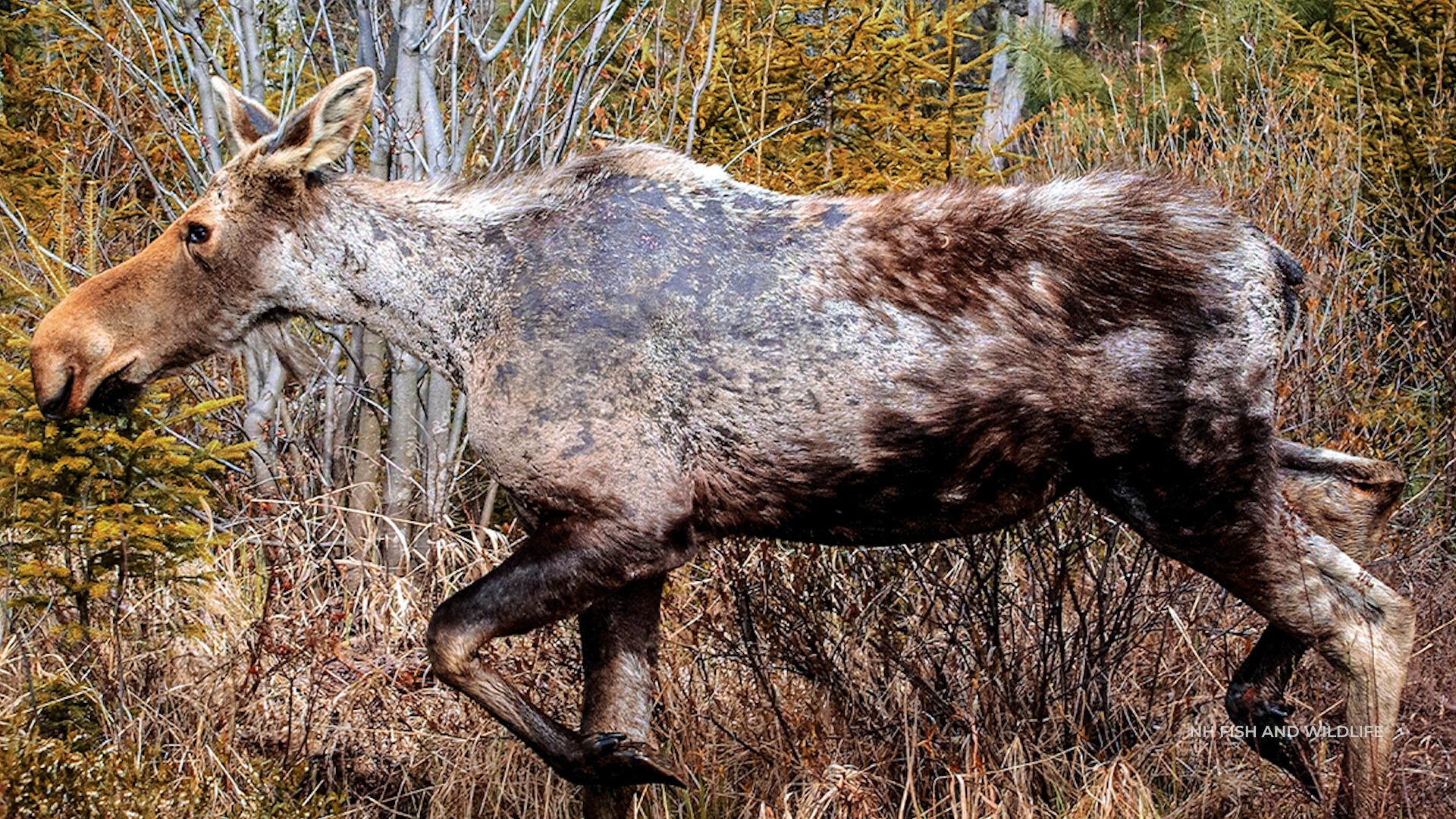
MOOSE IN NEW ENGLAND ARE DYING. THEIR BLOOD IS LITERALLY BEING SUCKED FROM THEIR BODIES. THEIR ENEMY ISN’T A FEROCIOUS BEAST, BUT HORDES OF TINY INSECTS KNOWN AS WINTER TICKS.
NEW ENGLAND’S MOOSE POPULATION IS FAIRLY STOUT. HOWEVER, HERDS IN AN AREA OF VERMONT, KNOWN AS THE NORTHEAST KINGDOM, ARE SUFFERING MIGHTILY. THE WINTER TICK INFESTATION IS SO SEVERE, RESEARCHERS FOUND SOME MOOSE CARRY MORE THAN 50,000 TICKS.
WINTER TICKS, OR MOOSE TICKS, ARE HOST-DEPENDENT PARASITES. THEY PREFER MOOSE BUT WILL ALSO FEED ON DEER. WHEN THEY FIND A HOST, THEY ATTACH BY THE THOUSANDS AND CAN FEED FOR MONTHS AT A TIME. WHILE THE HOST IS SLOWLY DRAINED OF BLOOD, IT CAN EXPERIENCE HAIR LOSS AND BEHAVIORAL CHANGE.
THE SURVIVAL RATE FOR ADULT MOOSE INFESTED WITH WINTER TICKS REMAINS FAIRLY HIGH, BUT BIRTH RATES ARE DEFINITELY IMPACTED. WINTER TICKS ARE ALSO THE LEADING CAUSE OF DEATH FOR MOOSE UNDER A YEAR OLD.
WITHOUT MANY NATURAL PREDATORS LEFT, THE MOOSE HERDS IN VERMONT AND THROUGHOUT NEW ENGLAND HAVE SWELLED. THAT, IN TURN, CONTRIBUTES TO THE INCREASE IN WINTER TICKS.
IT’S AT A POINT WHEN THE BEST WAY TO HELP VERMONT’S MOOSE FROM THE RAVAGES OF THE WINTER TICK, MAY BE TO KILL SOME OF THE MOOSE.
ASK ALMOST ANY WILDLIFE MANAGEMENT PROFESSIONAL AND THEY’RE LIKELY TO SAY HUNTING IS OFTEN THE BEST WAY TO CONTROL WILD ANIMAL POPULATIONS.
THIS FALL, THE VERMONT FISH AND WILDLIFE DEPARTMENT WILL NEARLY DOUBLE THE NUMBER OF MOOSE PERMITS IT ISSUES, GOING FROM 100 TAGS TO 180.
THE HUNTING WILL BE RESTRICTED TO THE AREAS OF THE STATE WHERE MOOSE POPULATIONS ARE THE DENSEST. THE VERMONT FISH AND WILDLIFE SAYS THE MOOSE POPULATION REDUCTION IS NECESSARY TO BREAK THE WINTER TICK CYCLE AND IMPROVE THE HEALTH OF MOOSE IN THE REGION. IN ADDITION TO VERMONT, MAINE AND NEW HAMPSHIRE ARE ALSO EXPERIENCING SEVERE OUTBREAKS OF WINTER TICKS.
WE HAVE MORE UNBIASED, STRAIGHT FACT REPORTING COVERING TOPICS ON THE ENVIRONMENT AND CONSERVATION AT STRAIGHT ARROW NEWS DOT COM.






